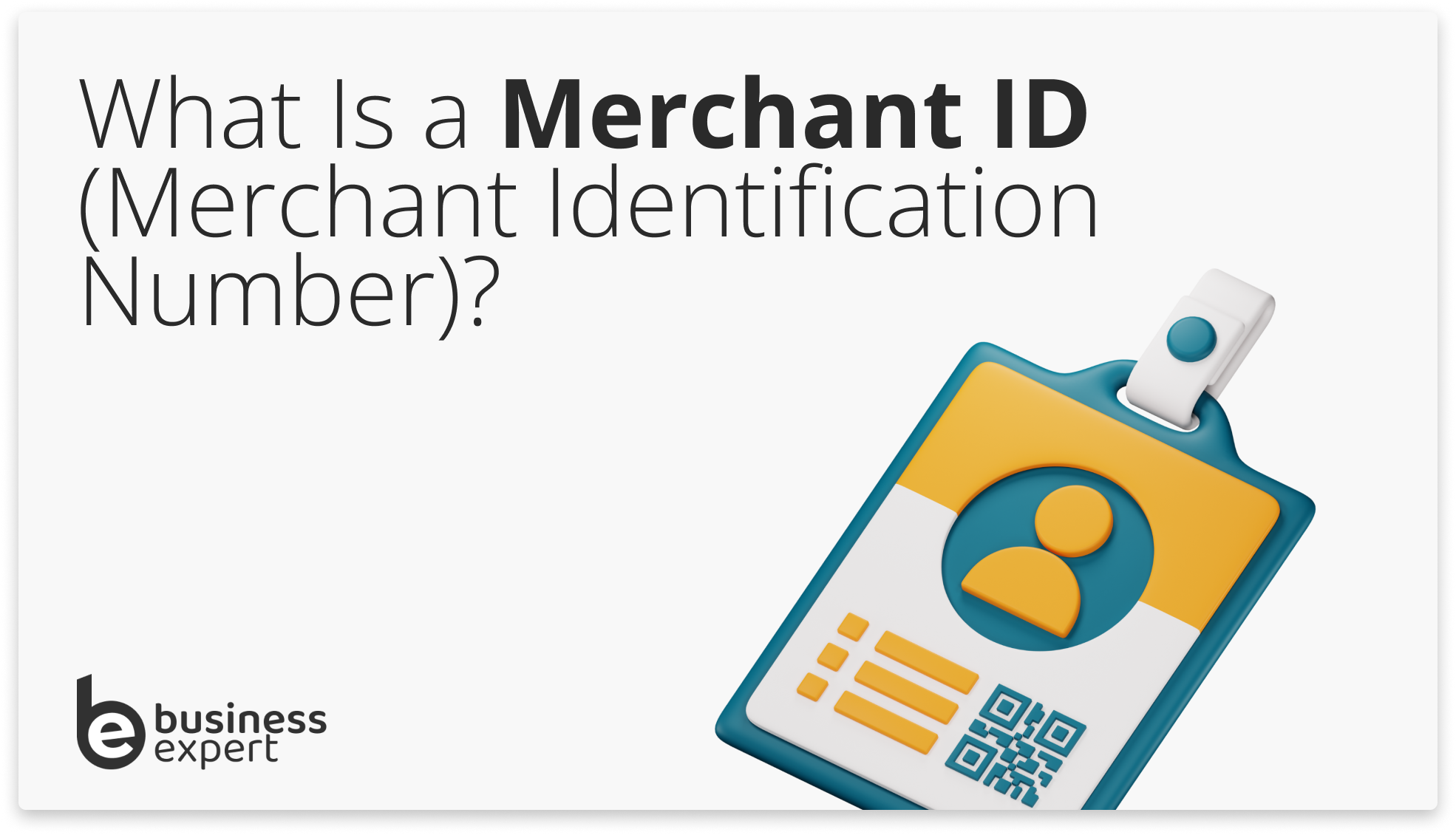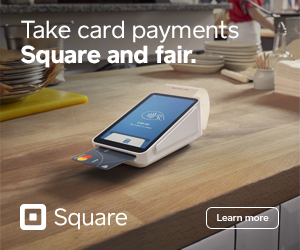If your business is taking card payments, you’ll need a merchant number, known within the industry as a MID.
But what are these, and why would you need one?


- What is a Merchant ID number?
- How Do Merchant IDs Work?
- Who Needs a Merchant ID Number?
- Why Your Business Needs a Merchant ID Number
- Is a Merchant ID Number the Same as a Merchant Account ID?
- Other Types of ID Numbers You May Have
- How to Get a Merchant ID Number Step-by-Step
- How to Find a Merchant ID Number
- Can You Lose Your Merchant ID Number?
- How To Protect Your Merchant ID Number
- FAQs
What is a Merchant ID number?
A merchant ID (MID) number is a unique, 15-digit code that identifies a business when it accepts card payments.
Assigned by your payment processor or bank, your MID acts as a digital fingerprint and helps the system track electronic payments to your business, ensuring they are sent to the correct place.
You’ll get a new MID number each time you open a merchant account, so you could potentially have more than one at any time.
You might want multiple merchant accounts if you have multiple businesses or have separate departments requiring separate payment processing.

How Do Merchant IDs Work?
- Transaction Processing: When a customer purchases using a card, the transaction details, including the MID, are transmitted to the payment processor or acquiring bank. The MID allows the processor to identify the specific merchant account associated with the transaction.
- Authorisation: The payment processor verifies the authenticity of the MID and checks if the transaction meets all security and fraud prevention criteria.
- Settlement: The funds from the customer’s account are transferred to the merchant’s account. The MID ensures that the funds are directed to the correct account associated with the merchant.
Who Needs a Merchant ID Number?
Businesses that want to accept card payments and receive payments electronically usually need a merchant ID number.
Suitable business types include those selling products or services in person, online, by mail or telephone.
Nonprofit organisations such as charities and community groups may also need to obtain a MID if they accept donations via credit or debit cards.
In contrast, businesses that only accept payments made in cash or by personal cheque may not need a MID.
You also won’t need a MID if you sign up for certain payment service providers like Square and Stripe. This is because they offer the same capabilities as a merchant account, so opening a separate account is unnecessary.
Why Your Business Needs a Merchant ID Number
Aside from processing electronic payments, there are several reasons why your business may need a MID.
These include:
- Customer Convenience: Offering multiple payment options through a merchant ID enhances customer convenience and satisfaction. Customers appreciate the flexibility to pay using their preferred payment method, whether a credit card, debit card, mobile payment, or online transfer.
- Business Credibility: A MID can show customers that your business is established, reputable, and capable of offering secure and reliable payment options.
- Account Upgrades: Payment processors and merchant service providers often offer businesses with MIDs additional features. These may include fraud prevention tools, chargeback management, advanced reporting capabilities, and integration with accounting software.
- Fraud Protection: Payment processors implement robust security measures to protect card transactions, including encryption, tokenisation, and fraud detection systems. You benefit from these security features by processing transactions through your MID number, reducing the risk of fraudulent activity and unauthorised transactions.
- Loyalty Programmes: Businesses with a MID may have the opportunity to join payment network-sponsored loyalty programmes. These programs can help businesses attract and retain customers by offering rewards and incentives for using specific payment methods or cards.
- Financial Management: A MID simplifies accounting processes by providing a clear record of all electronic transactions processed by the business. It facilitates reconciliation of payments, tracking of revenue streams, and management of cash flow, contributing to effective financial management practices.
- Customer Insights: MID numbers enable businesses to capture valuable customer data and insights through transaction records. This data can be used to analyse purchasing behaviour, tailor marketing campaigns, and personalise customer experiences, driving business growth and customer loyalty.
- Partnerships: Some affiliations or collaborations may require businesses to have a MID to participate in joint ventures, revenue-sharing agreements, or affiliate marketing programs involving electronic transactions.
Is a Merchant ID Number the Same as a Merchant Account ID?
Somewhat confusingly, your merchant ID number differs from your merchant account ID.
Like your MID, a merchant account ID is a unique code assigned by your payment processor or acquiring bank.
However, instead of identifying your business, your merchant account ID is associated with the specific bank account used to process the payment.
For example, a clothing store that sells its products in-person through a physical store and online via its website may have a merchant account for each channel, each with its own MID.
If both merchant accounts are through the same provider, the clothing store will only have one merchant account ID.
Other Types of ID Numbers You May Have
Aside from your MID and merchant account ID, you might also be assigned other payment processing ID numbers, like:
- Terminal ID (TID) – Assigned to a specific physical payment terminal or point-of-sale (POS) device to identify the terminal within the payment network and facilitate card transaction processing.
- Gateway ID (GID) – Assigned to a payment gateway to help connect online stores to the payment processing network securely.
How to Get a Merchant ID Number Step-by-Step
You’ll need to open a merchant account to get a new MID.
You can do this by
- Signing up with a payment processor such as Total Processing
- Applying directly to acquiring banks such as Worldpay
- Using an Independent Sales Organisation (ISO) that specialises in providing merchant services to businesses in your industry, such as Takepayments
- Signing up with a payment gateway that partners with an acquiring bank, such as Instabill
Many businesses find acquiring banks to have stricter eligibility criteria, so you may find opening a merchant account through a payment service provider such as Total Processing easier.
However, you may not receive a MID if you sign up for certain payment service providers like Stripe. This is because they’re full-service solutions that don’t require users to open a separate merchant account.
You’ll receive your MID once your account is approved.
Depending on your payment processor or acquiring bank’s application, this could take between a few days to a couple of weeks.
How to Find a Merchant ID Number
If you already have a MID, there are several easy ways to look it up, including:
- Checking your merchant account documents, including statements, contract agreements and welcome e-mails. It’s usually found in the top right corner.
- Logging in to your merchant account portal. Depending on your provider, it may be located on the dashboard or in the “account information”, “profile”, or “account settings” sections.
- Checking your bank statements, focusing on the description of transactions from your merchant account.
- Contacting your merchant account provider’s customer support team.
- Looking at your payment terminal, including the sides and bottom, for any labels.
Can You Lose Your Merchant ID Number?
You could lose your merchant ID number in several situations, like if:
- You decide to close your merchant account with a payment processor or acquiring bank.
- Your payment processor closes your account due to violations of the terms of service, such as excessive chargebacks, fraudulent activity, or non-compliance with regulations.
- Significant changes in your business structure, such as mergers or changes in ownership, lead to creating a new MID.
- Your payment processor deactivates your account due to extended periods of inactivity or low transaction volumes.
- Your payment processor changes their policies, fee structures or risk management guidelines.
How To Protect Your Merchant ID Number
Losing your MID will greatly impact your business as you’ll no longer be able to process card payments using your existing system.
It could take weeks to set up a new merchant account, but there are several things you can do to protect your MID so you don’t find yourself in this position in the first place.
These strategies include:
- Role-Based Access Contro (RBAC): Only grant access to employees who need access to systems and databases containing the Merchant ID to perform their job duties.
- Secure Storage and Transmission: Encrypt databases, files, and communications channels to prevent unauthorised access by hackers or malicious insiders.
- Password Management: Require employees to use complex passwords, implement password expiration and create lockout policies to mitigate the risk of unauthorised access due to compromised credentials.
- Firewall and Intrusion Detection Systems (IDS): Configure firewalls to restrict access to authorised users, block suspicious activity and alert IT staff to potential security breaches or unauthorised access attempts.
- Regular Security Updates: Keep systems, software applications, and security patches up to date to address known vulnerabilities and mitigate the risk of exploitation by cyber attackers.
- Employee Education: Train employees on best practices for password management, phishing awareness, and incident response procedures.
- Incident Response Plan: Establish procedures for detecting, containing, and mitigating security incidents, as well as notifying relevant stakeholders and regulatory authorities following legal requirements.
- Third-Party Assessments: Conduct regular security audits of providers and vendors that handle payment processing services or have access to the Merchant ID.
FAQs
Are there any fees associated with obtaining or maintaining a merchant ID number?
Generally, obtaining a merchant ID number doesn’t involve direct fees. However, maintaining a merchant account linked to the merchant ID may come with costs like setup, transaction, and monthly account fees. The specific fees can vary based on the payment processor, the type of transactions, and the volume of sales.
How long is a merchant ID number valid, and do I need to renew it?
A merchant ID number remains valid if you maintain your merchant account with the payment processor or acquiring bank. There’s usually no need to renew the Merchant ID unless there are changes to your account status or if the payment processor updates its systems and requires you to obtain a new ID.
Can I use the same merchant ID number for multiple businesses or locations?
No, you can’t usually use the same merchant ID number for multiple businesses or locations. Using the same merchant ID could confuse tracking transactions and managing payments accurately.
Can I transfer my merchant ID number if I switch payment processors?
No, you generally cannot transfer your merchant ID number if you switch payment processors. Each merchant ID is specific to the payment processor or acquiring bank that issued it. When you change payment processors, you typically receive a new merchant ID from the new processor because each processor has its own system and unique identification codes.
